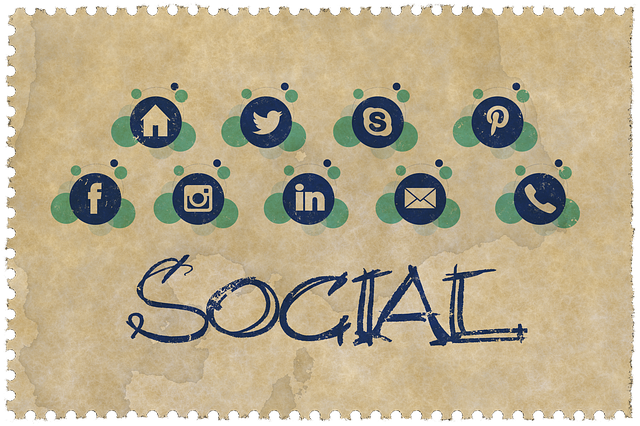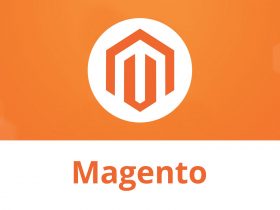Social media has changed the way businesses market their product and services. Marketers are getting really innovative with their social media strategies, and as result, we are seeing new trends and drifts almost every year. And we can even see the impact of social media on the web design industry.
Today, designers are expected to create not just attractive designs for client’s social media pages, but also to make their own both interesting and interactive. Moreover, they must create impressive designs for social ads to improve click rates. Therefore, it is nothing wrong to say that for the creative lots social media is becoming more and more intimidating. Why?
Mainly because the list of responsibilities assigned to the designer are growing long. But again, no designer can ignore the value of social media and opportunities it provides, especially in showcasing their own creativity. In this post, we will talk about some of the most powerful social platforms and how designers can leverage them to build an effective social media presence on them.
1. Instagram
Perhaps the fastest growing social network, Instagram Stories has hit 100 million daily active users within just 2 months. But before we proceed with this social channel, it is important to understand that Instagram is a visually driven social network and is better suited for building an audience rather than helping you get paying clients. In short, this platform is to showcase your offering, thanks to its video sharing functionality.
Instagram videos are more likely to receive “twice the amount of comments than photos,” finds a study by News Whip. For creative professionals, this means a better chance to build customer engagement. Besides, it makes a sense that over 15 million businesses are now using Instagram and more than half of them are leveraging on Stories every month.
So how a web designer should use Instagram Stories to his/her benefit? Here are a few ideas:
- To showcase behind-the-scenes content like a time-lapse of a creative project or a piece from your portfolio.
- Share “how-to” tutorials.
- Share lists and countdowns like “Top 10 Designing Tools for 2018”.
- As an introduction to your next Instagram takeover.
There are endless ideas, all you need to do is get creative with Instagram Stories. However, make sure the content is short and to the point and the video should not be more than five and 10 seconds.
2. Facebook
For a designer, Facebook is the most powerful platform to get both exposure and clients. Anna Wilson, a creative director in a Tampa web designer company, believes this is the platform for the adult demographic, people who will be purchasing your product. In fact, for aspiring designers it is the right place to connect with your fellow designers and prospective employers.
Get actively involved in some Facebook groups for small businesses and designers and start talking about design trends, news, and other things related to design industry. For established designers, you can create your Facebook Brand Page to showcase your portfolio and share design articles and resources related to the industry. This will not only help you establish your credibility but you can also showcase your passion for designing when prospective employers and/or clients look up for you on social media.
However, there are a few things you need to keep in mind when it comes to Facebook. For instance, what is the best time to post on Facebook? According to a study by Sprout Social, Thursday is the most recommended day to post and 1 PM on Thursday is the most active time. In addition, the study found that “Wednesday through Sunday are the strongest days to post.” Besides, any day between 9 AM to 3 PM is also safe to post your creation.
Now that you know the optimal time to post your content, it is also essential to know what kind of post will help you reach out to your target audience. Rallyverse’s Golden Ratio will give you some idea, to begin with:
- 30 percent original content, which is created by you including images of your portfolio, how-to and other insightful videos etc.
- 60 percent curated content from external sources, relevant to your audience and your brand.
- 10 percent content can be purely promotional calls to action.
Remember that the idea is to build engagement. So try and seek out relevant conversations like asking questions and sharing advice etc.
3. Behance
You probably think Behance to be a portfolio site, but the reality is that it is one of the best social media platforms for designers. In fact, this site can bring the most exposure to a designer’s portfolio, be it for a new job or be showcasing or sharing your creativity with a large community of designers. Of course, there are many high-profile designers and it may initially get a bit difficult to stand out among them, but don’t let that intimidate you.
Start small; post your best work and start collecting, commenting, and appreciating others work to connect and build relationships. Make yourself visible, and if done rightly you can not only grab the attention of prospective clients but also the interest of established creative and art directors who use Behance to search new talents.
Here is what Mell Ravenel, the Chief Designer at Behance, has to say about creating a great portfolio on this social site:
- Curate your best work.
- Share not just eye-catching images, but also your backstory.
- Keep your website design simple.
- Your bio should tell more about your point of view and/or unique process.
- Add blogs and awards to broadcast your work and achievements.
- Keep it fresh.
While you must follow these steps, there is also room for more to create a connection on Behance. For example, you can create a showcase on your Youtube channel to feature designers from Behance and start critiquing their work. This will not only help you get exposure but also engage with fellow designers and establish your credibility. However, be honest in your approach.
Conclusion
Just like any business or marketer, the best way for a web designer to approach social media is by being personal. Your focus should be on building the right kind of relationships. It is not a numbers game, so don’t bother about the number of contacts you have or the number of likes your posts get. Is your content interesting? Are people commenting on them? Are you establishing an emotional connection with your target audience? These are questions you need to ask yourself as they reflect the value you want to create.
So what social media channels do you use? Don’t forget to share your list with our readers.
Author Bio:
John Siebert is the President and CEO of Tranquil Blue – Tampa Web Design that focuses on all kind of website design, mobile app development and search engine marketing.
























